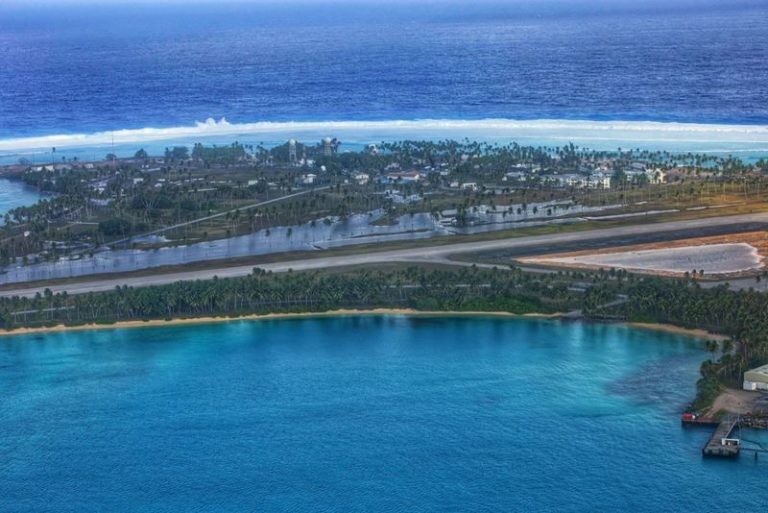“Gigantic” waves swamped parts of a key US military facility in the middle of the Pacific Ocean last weekend, causing damage that will take months to repair, according to a US Army report.
A video posted on X showed the terrifying surge of water rushing into a dining facility on Roi-Namur island, the second-largest island of Kwajalein Atoll, which hosts a US military ballistic missile defense test site in the Republic of the Marshall Islands.
The rushing water broke down doors and windows and pushed furniture around the facility as it reached near ceiling height in the video.
“Get out of here,” one person could be heard yelling just before the power cuts out and darkness envelops the facility at around 9 p.m. Saturday.
In a video posted on Facebook, Col. Drew Morgan, commander of US Army Garrison-Kwajalein Atoll (USAG-KT), said there were only minor injuries from the “unpredicted, gigantic waves” that washed over the north point of the tiny island.
But the US Army report said damage to the island’s infrastructure was extensive.
“Multiple areas on the island are under water,” according to the Army statement, which was posted and accompanied by an aerial photo taken on January 21 that shows extensive flooding on Roi-Namur.
The runway on the island, home to 120 personnel, needed to be cleared so recovery operations could begin, according to the statement from USAG-KT.
The island’s housing, automotive complex, theater and chapel were damaged, it said.
“Operation Roi Recovery could take months to complete,” the Army said.
The report did not mention any damage to military infrastructure.
The weather service says rogue waves are unpredictable, are at least twice the size of surrounding waves and can come from directions other than the prevailing wind and wave patterns.
Shackelford said the effects of rogue waves are exacerbated by rising sea levels brought on by climate change.
“The impacts of these waves are also more strongly felt across low-lying islands, which includes the Marshall Islands,” he said.
The US Geological Survey says the maximum elevation of Roi-Namur is less than 4 meters (13 feet).
The island is tiny, with a total area of a total area of about 2.5 square kilometers (about 1 square mile), it says.
It’s also remote, about 3,900 kilometers (2,100 miles) southwest of Hawaii and just 9 degrees latitude north of the equator.
That makes it an excellent location for missile testing and detection, according to the US Army’s Space and Missile Defense Command, which operates the Ronald Reagan Ballistic Missile Defense Test Site on Kwajalein.
“Radar, optical and telemetry sensors on the atoll support missile testing, missile launches, space reconnaissance and surveillance operations, and science experiments for the Department of Defense and multiple other government agencies,” the Army says in a profile of the test site.
It is also a key site for monitoring foreign space and missile activity, the profile says.
“With first visibility of most launches out of Euro-Asia, RTS provides critical orbital information on new foreign launches in support of the U.S. Strategic Command.”
About 1,300 Americans live and work on Kwajalein Atoll in total, according to the Army.

